How to Top Balance 16 Cells Effectively
When building or maintaining a lithium battery pack, ensuring that each cell operates at the same voltage is critical to performance and longevity. This is where the process of Top Balance comes into play. If you’re wondering how to Top Balance 16 cells effectively, this comprehensive guide will walk you through every aspect of the process. Whether you are an experienced DIYer or a newcomer, understanding Top Balance techniques will save you time, improve battery performance, and enhance safety.
- What Is Top Balance and Why It Matters
- Equipment Needed to Top Balance 16 Cells Effectively
- Preparing to Top Balance 16 Cells
- Step by Step Guide to Top Balance 16 Cells Effectively
- How Often Should You Top Balance 16 Cells
- Common Mistakes to Avoid When You Top Balance 16 Cells
- Advanced Techniques for Faster Top Balance
- Top Balance and Battery Longevity
In this guide, we will explore why Top Balance is necessary, what equipment you’ll need, step-by-step procedures, and expert tips to avoid common pitfalls. By the end, you will know exactly how to Top Balance 16 cells effectively.
What Is Top Balance and Why It Matters
Understanding Top Balance
Top Balance refers to the process of charging all the individual cells in a battery pack to the same maximum voltage level. In a 16-cell lithium pack—commonly seen in 48V configurations—each cell must reach the same voltage to ensure even charging and discharging.
Why Top Balance 16 Cells
When the cells are unbalanced, some will charge or discharge faster than others, leading to:
Reduced usable capacity
Premature degradation
Potential overcharging or deep discharging
Thermal imbalances that can cause safety issues
Proper Top Balance ensures that your 16 cells work in harmony, maximizing lifespan and performance.
Equipment Needed to Top Balance 16 Cells Effectively
Essential Tools
To Top Balance 16 cells effectively, you will need the following equipment:
Programmable power supply or a precise lithium battery charger
Accurate multimeter or cell voltmeter
Balancer board or active/passive balancers
Battery management system (BMS) (optional but recommended)
Wiring and connectors suitable for your battery type
Optional Equipment for Advanced Users
Thermal camera for monitoring heat
Data logger to record cell voltages over time
Isolation switches for enhanced safety
Using quality equipment will make the Top Balance process smoother and more reliable.
>>See also Using a Car Battery for a Trolling Motor Explained
Preparing to Top Balance 16 Cells
Safety First
Before starting Top Balance on your 16 cells:
Wear protective gloves and eyewear
Ensure your workspace is ventilated
Have a fire extinguisher rated for electrical fires nearby
Inspect Each Cell
Check each of your 16 cells for:
Physical damage or bloating
Consistency in initial voltage
Manufacturer specifications and matching chemistry
If any cell is damaged, do not proceed with Top Balance until the issue is resolved.
Arrange the Cells Properly
Align your cells in series, clearly marking the positive and negative terminals. Double-check the connections to avoid accidental shorts.
Step by Step Guide to Top Balance 16 Cells Effectively
Step 1: Initial Voltage Check
Use a precise voltmeter to record the voltage of each cell. This baseline will help you monitor progress throughout the Top Balance process.
Step 2: Set Up Your Charging Equipment
Connect your programmable power supply or charger to the series-connected 16-cell pack. Set the maximum voltage carefully:
For LiFePO4 cells: typically 3.65V per cell (58.4V total for 16 cells)
For NMC cells: typically 4.2V per cell (67.2V total for 16 cells)
Step 3: Begin Charging Slowly
Start the charge at a low current (0.05C–0.1C) to allow the cells to approach full voltage gradually. This reduces stress and minimizes heat generation.
Step 4: Monitor Voltages Closely
As the cells near full charge, monitor individual voltages:
Cells that reach target voltage early will need balancing
Slower-charging cells will catch up over time
Maintain vigilance to ensure no cell exceeds safe voltage levels during Top Balance.
Step 5: Balancing Process
Once most cells reach the top voltage, activate your balancer:
Passive balancers dissipate excess energy as heat
Active balancers redistribute energy from high-voltage to low-voltage cells
Continue charging and balancing until all 16 cells stabilize at the target voltage.
Step 6: Final Verification
After Top Balance is complete:
Disconnect the charger
Let the pack rest for several hours
Measure voltages again; cells should be within ±0.01V of each other
If not, repeat the balancing cycle.
How Often Should You Top Balance 16 Cells
Initial Pack Assembly
Top Balance is essential when first assembling your 16-cell battery pack. This establishes a consistent baseline across all cells.
Periodic Maintenance
Depending on usage patterns and BMS capabilities, periodic Top Balance may be needed:
Heavy cycling: every 3–6 months
Light usage: annually or as needed
A well-configured BMS can minimize the need for frequent Top Balance.
Common Mistakes to Avoid When You Top Balance 16 Cells
Overcharging
Never exceed the manufacturer’s recommended voltage. Overcharging can lead to:
Cell swelling
Permanent capacity loss
Safety hazards, including thermal runaway
Inadequate Monitoring
Failing to monitor individual cell voltages during Top Balance can allow imbalances to go unnoticed.
Skipping Initial Balance
Some users mistakenly skip Top Balance during initial assembly, leading to long-term pack performance issues.
>>See also Common Questions About Charging a 12 Volt Battery in a Prius
Advanced Techniques for Faster Top Balance
Pre-balancing Individual Cells
If large imbalances are present, consider pre-balancing:
Charge low cells individually
Discharge high cells slightly
This reduces the workload on the final Top Balance phase.
Using Active Balancers
Investing in a quality active balancer can maintain balance dynamically during regular operation, reducing the need for manual Top Balance.
Data Logging
Tracking cell voltages over time can help identify problematic cells early, optimizing your Top Balance strategy.
Top Balance and Battery Longevity
A properly balanced battery pack enjoys:
Higher usable capacity
Reduced stress on individual cells
Longer lifespan (often 2–3x longer than poorly balanced packs)
Enhanced safety and reliability
By learning how to Top Balance 16 cells effectively, you invest in the long-term success of your battery system.
Understanding how to Top Balance 16 cells effectively is a crucial skill for anyone working with lithium battery packs. Whether you are building a DIY system or maintaining a commercial product, proper Top Balance ensures maximum performance, safety, and longevity.
Throughout this guide, we’ve covered:
What Top Balance is and why it matters
The equipment you’ll need
Step-by-step procedures for successful balancing
Tips for advanced users
Common mistakes to avoid
By following these best practices, you can confidently perform Top Balance on your 16-cell pack, ensuring optimal results.
Remember, Top Balance is not a one-time task but an ongoing part of battery maintenance. Regularly checking and balancing your cells will pay dividends in the form of better performance and longer service life.
If you’ve ever wondered how to Top Balance 16 cells effectively, now you have all the tools and knowledge to do it right. Don’t neglect this critical step—your battery will thank you!

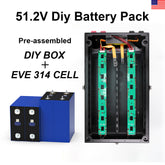

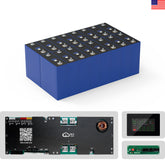

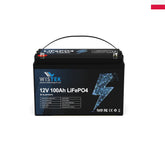
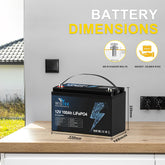

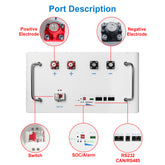
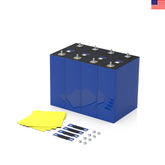
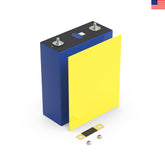
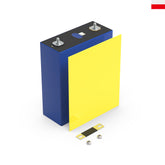

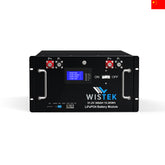
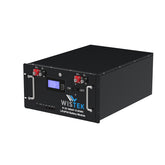
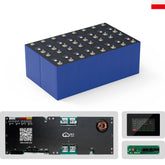








Leave a comment
All blog comments are checked prior to publishing